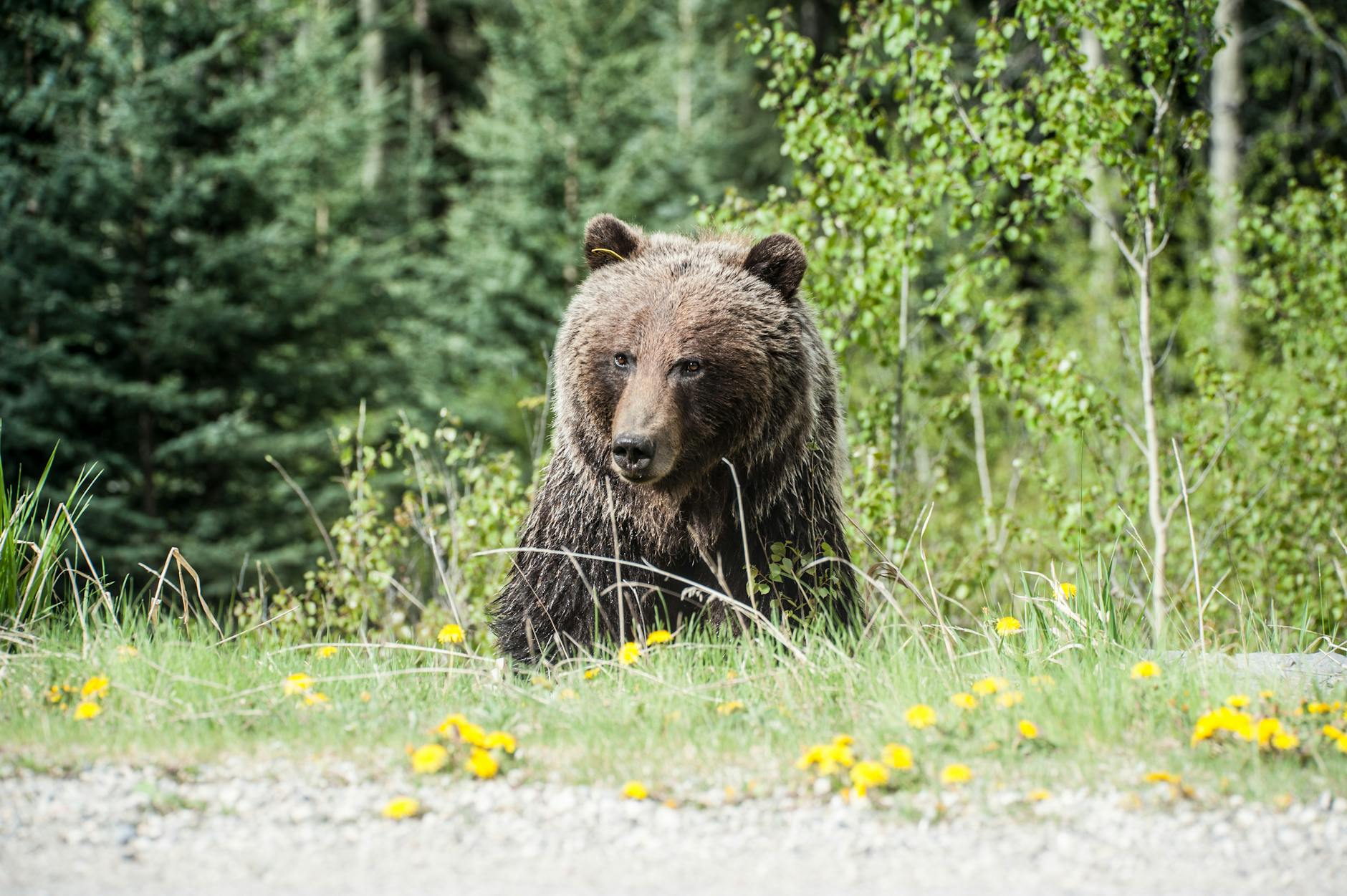When it comes to the giants of the bear family, the two titans that come to mind are the polar bear and the grizzly bear. Both are formidable creatures, yet they differ habitat, diet, behavior, and, notably, size. This comparison dives into every aspect of what makes these two bears uniquely powerful and distinct, especially when it comes to their physical dimensions and capabilities.
Overview of Polar Bear and Grizzly Bear Species
The polar bear (Ursus maritimus) is a true Arctic giant, mainly inhabiting regions around the North Pole, from Alaska and Canada to Greenland, Norway, and Russia. Adapted to icy environments, polar bears are excellent swimmers and skilled hunters. Their diet consists mostly of seals, which they hunt on the sea ice.

In contrast, the grizzly bear (Ursus arctos horribilis), a subspecies of the brown bear, is primarily found in North America, ranging from Alaska to the western United States and Canada. Known for their adaptability, grizzlies inhabit diverse ecosystems, from dense forests and mountain ranges to meadows and plains. Their diet is omnivorous, ranging from berries and plants to fish and small mammals.

Size Comparison: Height, Length, and Weight
Height
When standing on their hind legs, polar bears are the tallest, reaching a towering height of up to 10 feet (3 meters). This height allows them to look intimidating to potential threats and is helpful for spotting prey in the Arctic landscape.
Grizzlies, though shorter, still reach impressive heights. A large male grizzly can stand up to 8 feet (2.4 meters) tall on its hind legs. While they’re generally shorter than polar bears, grizzlies often compensate with powerful musculature and agility, making them exceptionally formidable on land.
Length
Polar bears also outshine grizzlies body length, measuring between 7.25 and 8 feet (2.2 to 2.5 meters) from nose to tail. Their elongated bodies are designed to swim through icy waters, helping them hunt seals and other marine mammals with ease.
Grizzly bears, meanwhile, tend to have slightly shorter bodies, measuring about 6.5 to 8 feet (2 to 2.4 meters) in length. Their build is more compact, with powerful limbs adapted for digging and tearing, a trait honed for terrestrial survival.
Weight
When it comes to weight, polar bears generally have the upper hand. An adult male polar bear can weigh between 900 and 1,600 pounds (410 to 725 kg), depending on age and region. During the peak hunting season, they build fat reserves to survive the harsh Arctic winters, which boosts their weight significantly.
Grizzly bears, though smaller, are no lightweights. A male grizzly weighs between 400 and 790 pounds (180 to 360 kg). While they’re typically leaner than polar bears, grizzlies also build fat reserves, particularly before hibernation in winter. In exceptional cases, large grizzlies, especially in Alaska, can weigh up to 1,200 pounds (544 kg), rivaling some smaller polar bears in size.
Bears are iconic mammals with a complex evolutionary history. Natural bear hybrids and studies of few nuclear genes indicate that gene flow among bears may be more common than expected and not limited to polar and brown bears.
Physical Strength and Power
Both polar bears and grizzly bears are incredibly strong, but their strengths cater to their respective environments and lifestyles.
- Polar Bear Strength: Adapted to hunt on ice and in the water, polar bears own exceptional upper body strength, which they use to break through ice and pull large seals from the water. Their powerful forelimbs and sharp claws make them lethal hunters in their frigid Arctic domain.
- Grizzly Bear Strength: Grizzlies are known for their explosive power, which is critical in a more diverse terrain. Their shoulder hump, a distinctive feature, is a muscle powerhouse that allows them to dig, tear, and fight with incredible force. This feature gives them a significant advantage in close-range encounters, even with large prey.
Skull and Bite Force
The bite force of a bear is another impressive trait, contributing to their predatory and defensive capabilities.
- Polar Bear Bite Force: Polar bears have large skulls with powerful jaws adapted to crush the tough blubber and bones of seals. Their bite force reaches approximately 1,200 pounds per square inch (psi), which is essential for subduing prey swiftly and effectively on the ice.
- Grizzly Bear Bite Force: While their bite force is comparable, grizzlies have a more compact skull suited for tearing meat and crushing bones on land. Their bite force also averages around 1,160 psi, allowing them to hunt and defend effectively against threats in their mountainous and forested habitats.
Adaptations to Environment and Survival Tactics
Both bears are masters of their domains, equipped with unique adaptations that enable them to thrive.
- Polar Bears’ Cold Adaptations: Polar bears have a dense layer of body fat and two layers of fur to insulate them from the Arctic cold. Their large, wide paws act like snowshoes, distributing their weight across the ice and providing grip in slippery conditions. Additionally, their swimming skills are exceptional; they can cover vast distances in search of food, a necessity in the sparse Arctic ecosystem.
- Grizzlies’ Versatility: Grizzlies are more adaptable to different climates, which is why they’re found in diverse regions. They have sharp claws and powerful limbs for digging up roots and tearing into logs for insects. Their keen sense of smell also aids in tracking prey and locating food sources like carcasses, fruit, and small animals.
Interaction and Conflict Between Polar Bears and Grizzlies
Due to climate change, polar bears and grizzlies are increasingly crossing paths in the northern regions, leading to some interspecies encounters. In areas like Canada’s Northern Territories, hybrid offspring known as “pizzly” or “grolar” bears have been observed.
These hybrids tend to inherit a mix of traits from both parents, including size and diet preferences, though their survival success in either extreme environment remains uncertain.
When it comes to direct conflict, grizzly bears often dominate, given their aggressive nature and adaptability to land. Polar bears, on the other hand, generally avoid direct encounters, preferring to hunt in solitude.
Who Would Win in a Fight?
Though it’s natural to wonder which bear would prevail in a hypothetical encounter, the outcome would depend on numerous factors, including the environment, individual size, and temperament.
In an Arctic setting, a polar bear would likely have the advantage, given its familiarity with the icy landscape and larger body mass. However, on land, a grizzly’s agility, territorial aggression, and powerful forelimbs might give it the upper hand. Both bears are formidable in their own right, each adapted to dominate their specific environments.
Are Polar Bears Bigger Than Grizzly Bears?
When comparing the giants of the bear world, polar bears and grizzly bears top the list. Both are powerful, but they differ significantly in size and appearance. So, are polar bears really bigger than grizzly bears? Let’s break it down.
1. Polar Bears: The Largest Land Carnivores
Polar bears are the biggest carnivores on land. Adult male polar bears can weigh between 900 and 1,600 pounds (410 to 725 kg). They can stand up to 10 feet tall (3 meters) when on their hind legs, and their body length typically ranges from 7 to 8 feet (2.1 to 2.4 meters). Their massive size helps them survive in harsh Arctic conditions and hunt large prey like seals.
2. Grizzly Bears: Compact Yet Powerful
Grizzly bears, a subspecies of brown bears, are smaller but still very strong. Adult males usually weigh between 400 and 790 pounds (180 to 360 kg), though some Alaskan grizzlies can reach up to 1,200 pounds (544 kg). Standing, a grizzly bear can reach around 8 feet tall (2.4 meters), with a body length of 6.5 to 8 feet (2 to 2.4 meters). Their build is shorter and more muscular, adapted for forest and mountain terrain.
3. Why Polar Bears Are Generally Bigger
The size difference mainly comes from their environments. Polar bears live in the Arctic, where they need extra fat and muscle to stay warm and hunt large marine mammals. Grizzly bears, so, live in diverse habitats like forests and mountains. They need strong limbs for digging and agility for moving through rough terrain, not the extra bulk that polar bears carry.
4. Strength Comparison: Different Skills for Different Terrains
Polar bears are built for icy, open areas, and their size helps them tackle big prey. Their long, powerful limbs and large paws make them excellent swimmers and hunters on ice. Grizzlies, though smaller, have explosive power and sharp claws perfect for digging and tearing on land. They are faster and more agile on solid ground.
5. So, Who’s Bigger?
Yes, polar bears are generally bigger than grizzly bears. They usually have a larger body, more weight, and greater height. Yet, grizzly bears, especially Alaskan grizzlies, can sometimes come close in weight.
6. Can They Meet in the Wild?
Yes, polar bears and grizzly bears have been spotted together in regions where their territories overlap. With warming climates, hybrid “pizzly” or “grolar” bears are even seen, combining traits of both species. But, these encounters remain rare.
Conclusion: A Comparison of Giants
While the polar bear and the grizzly bear each hold impressive physical records, the true comparison lies in their ability to thrive within their respective worlds. The polar bear is a true marine mammal, unparalleled in the Arctic waters and ice, while the grizzly bear is a land powerhouse, capable of dominating diverse terrains with its strength and adaptability. Both are marvels of evolution, each equipped with unique features that have allowed them to survive as apex predators in their environments.
In terms of size, polar bears are generally larger, especially in height and weight, but grizzlies are no less powerful. Their coexistence, even in overlapping territories, shows that these two species have mastered the art of survival in their unique domains.


